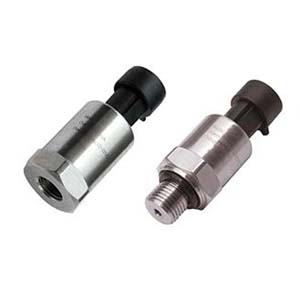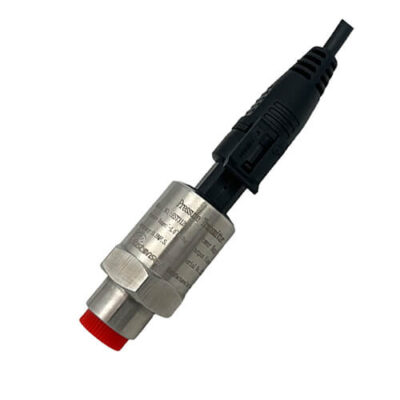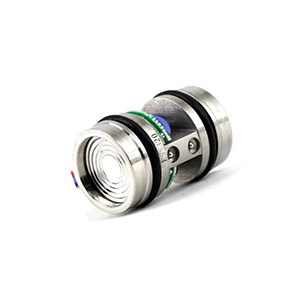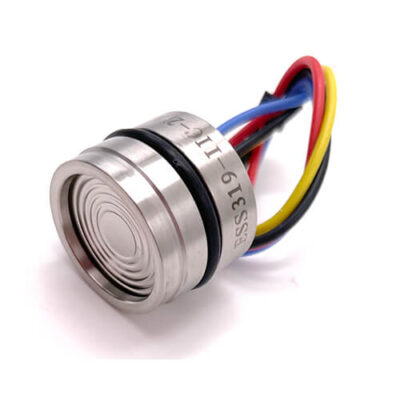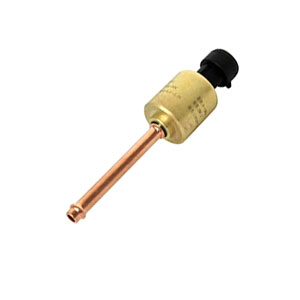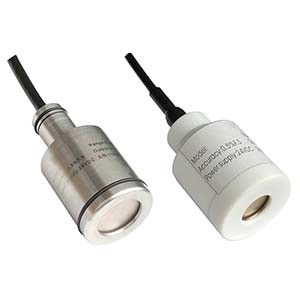Introduction
Threaded connections are a widely used and cost-effective solution for joining pressure sensors to equipment. They offer installation flexibility and can easily be adjusted or removed in case of maintenance. Some common thread types include NPT, BSP, and Metric. Tightening torque should be carefully considered when installing threaded connections, as it directly impacts the effectiveness of the seal.
The most widely used thread types for pressure sensor connections include
- National Pipe Thread (NPT),
- British Standard Pipe (BSP),
- Metric threads. Standards:
The American National Standards Institute (ANSI) regulates NPT threads, British Standard Institute (BSI) oversees BSP threads, and the International Organization for Standardization (ISO) governs Metric threads.
For more details about these three, please click to check.
Aside from the previously mentioned NPT, BSP, and Metric threads, several other thread types can be utilized in pressure sensor connections. Some of these include:
SAE Straight Thread (also known as O-ring Boss or ORB):
This thread type features a straight thread and an O-ring to create a tight seal. SAE J1926 regulates these threads, which are widely used in hydraulic systems. The O-ring ensures that a leak-proof seal is formed, providing reliable performance and minimizing the risk of leakage.
UN/UNF (Unified National/Unified National Fine):
These thread types conform to the Unified Thread Standard (UTS) and are denoted as either coarse thread (UN) or fine thread (UNF). They are commonly used in the United States and Canada for various applications, including pressure sensors.
JIC (Joint Industrial Council) Fittings:
Although not a thread type, these fittings feature a 37-degree flare, which forms a tight seal when connecting to a JIC flared female fitting. They are designed to handle high pressure and are commonly used in hydraulic systems.
Table: Key information on threaded connections for pressure sensors
| Thread Type | Standard | Highlight Features | Common Materials | Limitations | Suitable Industries |
|---|---|---|---|---|---|
| NPT (National Pipe Thread) | ANSI | Easy installation, tapered design for tight fit | Stainless steel, brass, carbon steel, Hastelloy, Monel | Potential for leaks, not suitable for ultra-high pressure | Oil and gas, water treatment, HVAC, process industries |
| BSP (British Standard Pipe) | BSI | Parallel and tapered types available, globally recognized | Stainless steel, brass, carbon steel, Hastelloy, Monel | Requires thread sealant, not ideal for high-pressure applications | Oil and gas, water treatment, HVAC, process industries |
| Metric | ISO | Globally recognized, various pitch options | Stainless steel, brass, carbon steel, Hastelloy, Monel | Not universally compatible, may require thread sealant | Automotive, industrial machinery, process industries |
| SAE Straight Thread (O-ring Boss) | SAE J1926 | Straight thread with O-ring seal, high-pressure compatibility | Stainless steel, brass, carbon steel, Hastelloy, Monel | Limited adjustability due to O-ring | Hydraulic systems, aerospace, automotive |
| UN/UNF (Unified National, Coarse/Fine) | ASME B1.1 | Coarse and fine thread options, widely used in North America | Stainless steel, brass, carbon steel, Hastelloy, Monel | Not universally compatible, may require thread sealant | Automotive, industrial machinery, aerospace |
| G-series (ISO/BSP Parallel) | ISO 228 | Parallel design, requires gasket or O-ring for sealing | Stainless steel, brass, carbon steel, Hastelloy, Monel | Not ideal for high-pressure applications, requires separate seal | Water treatment, HVAC, automotive, process industries |
| JIC (Joint Industrial Council) Fittings | SAE J514 | 37-degree flare for tight seal, high-pressure compatibility | Stainless steel, brass, carbon steel, Hastelloy, Monel | Specialized design, not a threaded connection | Hydraulic systems, aerospace, automotive |
To ensure optimal performance and a reliable seal, following proper installation guidelines for threaded process connections is crucial. Start by selecting the correct thread type and size for your application.
When installing, use the manufacturer-recommended torque to tighten the connection, preventing over-tightening or under-tightening, which can result in leaks or damage to the threads. Thread sealants, such as Teflon tape or liquid threadlocker, should be applied according to the manufacturer’s instructions to ensure a leak-free connection.
A Comprehensive Guide to Thread Types
As a mechanical and electrical engineer, I understand the importance of the right thread type for pressure sensors. This blog post aims to provide you with detailed, valuable, and specific information about various thread types, ensuring you make the best decision for your application. We will discuss **NPT, G, M, and R** thread types and other less common options.
1, NPT Threads
NPT1/2, NPT1/4, and NPT1/8
National Pipe Taper (NPT) threads are the most common type for pressure sensors in North America. The **tapered design** creates a tight seal when the male and female threads are engaged. The three most common sizes are:
NPT1/2: This is the **most popular** size, with a nominal diameter of 0.5 inches (12.7 mm) and a thread pitch of 14 threads per inch (TPI). It is suitable for medium to high-pressure applications, handling pressures up to **1500 psi (10.34 MPa)**.
NPT1/4: With a nominal diameter of 0.25 inches (6.35 mm) and a thread pitch of 18 TPI, it’s ideal for low to medium-pressure applications. The maximum pressure rating is **1000 psi (6.89 MPa)**.
NPT1/8: This size has a nominal diameter of 0.125 inches (3.18 mm) and a thread pitch of 27 TPI. It is typically used for low-pressure applications, with a maximum pressure rating of **500 psi (3.45 MPa)**.
2, G Threads
G1/2, G1/4
As we discussed before, G threads, also known as BSP (British Standard Pipe) threads, are widely used in Europe, Asia, and other regions outside North America. They have a parallel design and rely on a gasket or O-ring for sealing. The two most common sizes include:
G1/2: This size has a nominal diameter of 0.5 inches (12.7 mm) and a thread pitch of 14 TPI. It is suitable for medium to high-pressure applications, with a maximum pressure rating of 1500 psi (10.34 MPa).
G1/4: With a nominal diameter of 0.25 inches (6.35 mm) and a thread pitch of 19 TPI, it is ideal for low to medium pressure applications. The maximum pressure rating is 1000 psi (6.89 MPa).
3, M Threads
M20x1.5, M12x1.5
Metric (M) threads are another parallel thread type commonly used in pressure sensors. They are designated by their nominal diameter (in millimeters) followed by the thread pitch. The two most popular sizes are:
M20x1.5: This size has a nominal diameter of 20 mm and a thread pitch of 1.5 mm. It is suitable for medium to high-pressure applications, with a maximum pressure rating of 1500 psi (10.34 MPa).
M12x1.5: With a nominal diameter of 12 mm and a thread pitch of 1.5 mm, it is ideal for low to medium pressure applications. The maximum pressure rating is 1000 psi (6.89 MPa).
4, R Threads
R1/4, R1/8
R threads, also known as **PT (Pipe Taper) threads**, are a variant of the BSP thread family. They have a **tapered design** similar to NPT threads but follow a different standard. The two most common sizes include:
R1/4: This size has a nominal diameter of 0.25 inches (6.35 mm) and a thread pitch of 19 TPI. It is suitable for low to medium pressure applications, with a maximum pressure rating of 1000 psi (6.89 MPa).
R1/8: With a nominal diameter of 0.125 inches (3.18 mm) and a thread pitch of 28 TPI, it is ideal for low-pressure applications. The maximum pressure rating is 500 psi (3.45 MPa).
5, Others
Other thread types are available for pressure sensors, such as UNF (Unified Fine) and UNEF (Unified Extra Fine) threads. These types are less common but may be suitable for specific applications. Consult a specialist if you need a unique thread type.
Thread Type Selection Table
| Thread Type | Nominal Diameter | Thread Pitch | Max Pressure Rating |
|---|---|---|---|
| NPT1/2 | 0.5 in (12.7 mm) | 14 TPI | 1500 psi (10.34 MPa) |
| NPT1/4 | 0.25 in (6.35 mm) | 18 TPI | 1000 psi (6.89 MPa) |
| NPT1/8 | 0.125 in (3.18 mm) | 27 TPI | 500 psi (3.45 MPa) |
| G1/2 | 0.5 in (12.7 mm) | 14 TPI | 1500 psi (10.34 MPa) |
| G1/4 | 0.25 in (6.35 mm) | 19 TPI | 1000 psi (6.89 MPa) |
| M20x1.5 | 20 mm | 1.5 mm | 1500 psi (10.34 MPa) |
| M12x1.5 | 12 mm | 1.5 mm | 1000 psi (6.89 MPa) |
| R1/4 | 0.25 in (6.35 mm) | 19 TPI | 1000 psi (6.89 MPa) |
| R1/8 | 0.125 in (3.18 mm) | 28 TPI | 500 psi (3.45 MPa) |
At last, understanding the differences between various thread types and their respective pressure ratings is crucial when selecting the appropriate pressure sensor for your application.
By considering the information provided in this and the previous guide, you can make an informed decision and ensure the best performance in your system.

